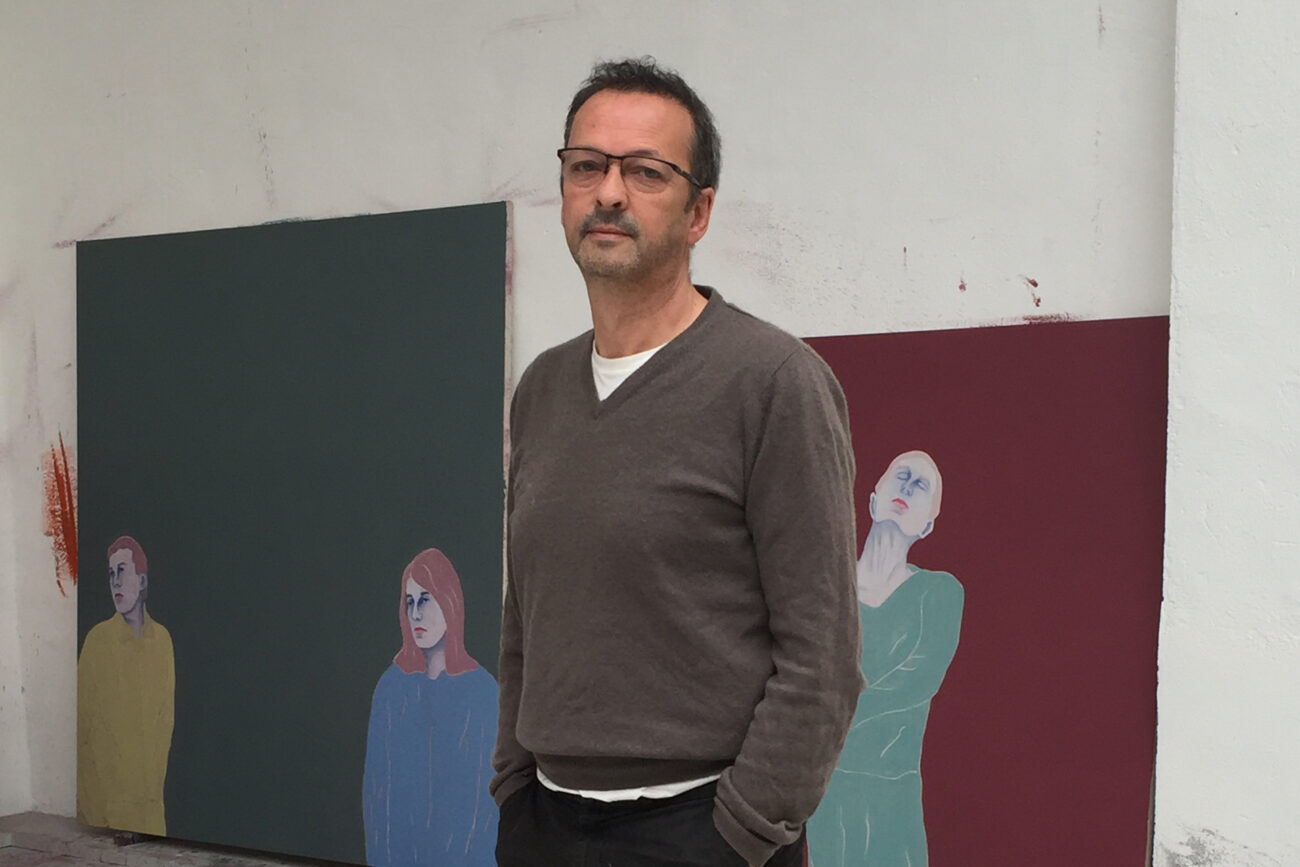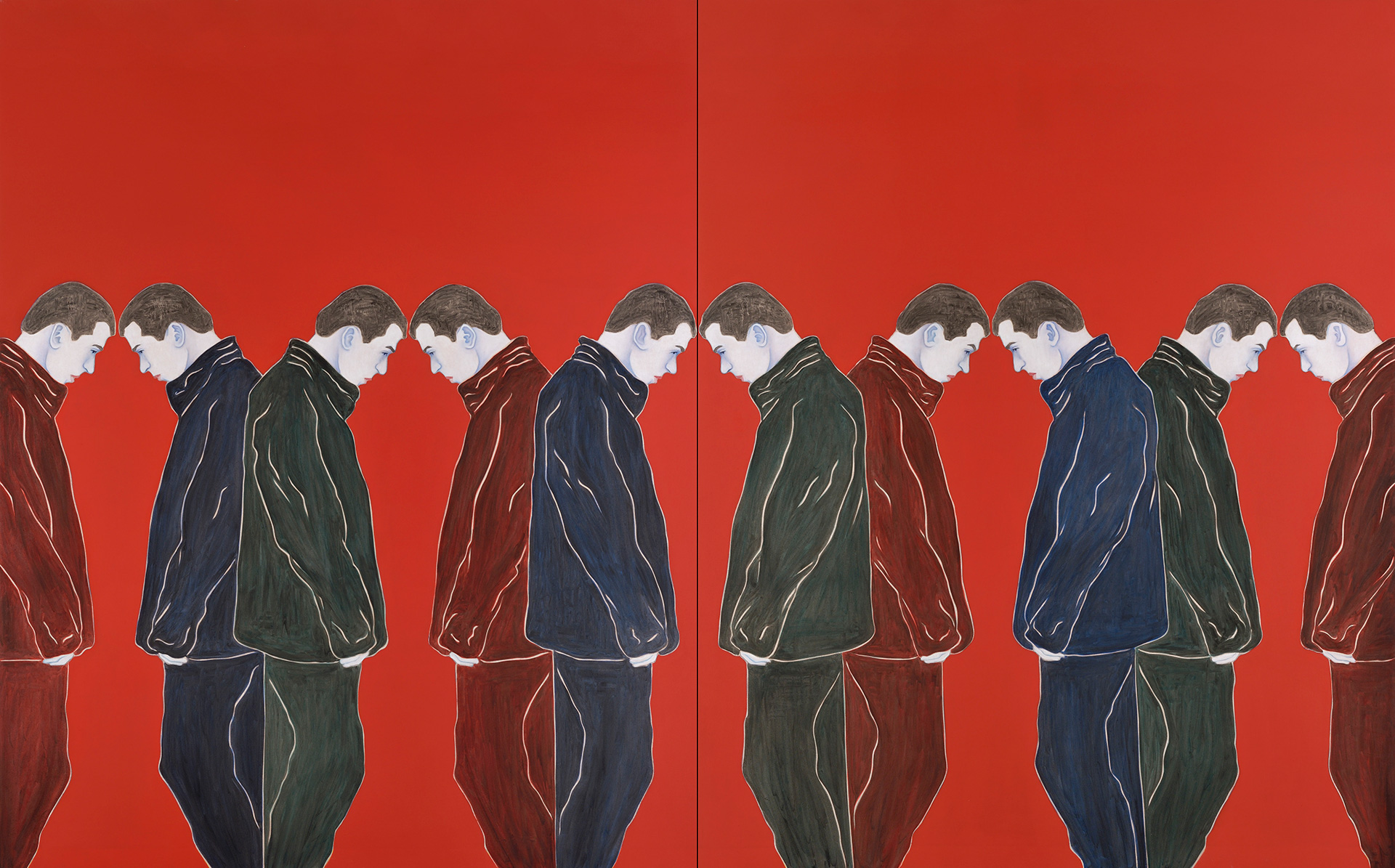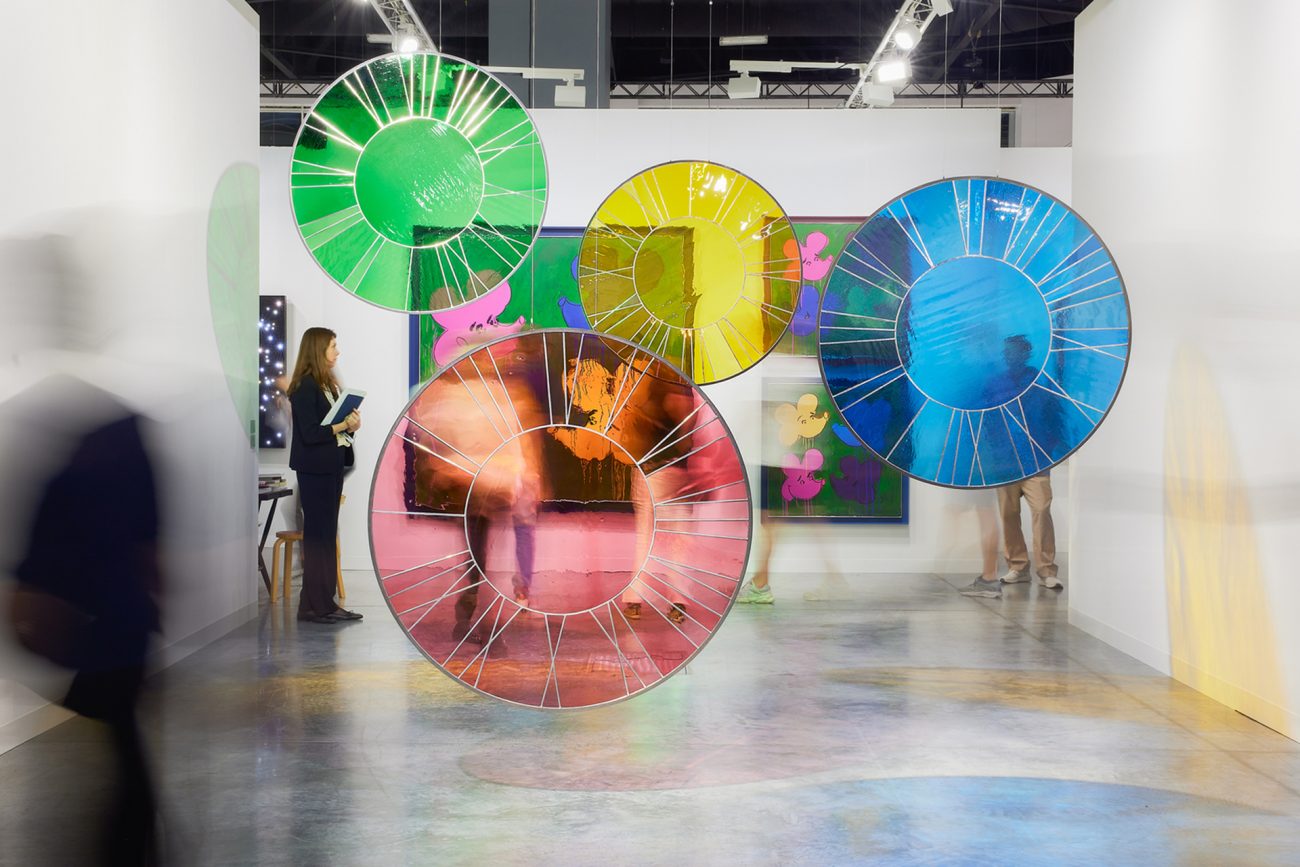In the studio with Djamel Tatah

Tatah’s art incorporates elements of American abstraction and Italian primitivism: nothing seems to have escaped this great contemporary painter. He recently received us at his immense studio in southern France with his characteristic warmth and generosity.
Your paintings depict figures on monochromatic backgrounds that you approach as if you were an abstract artist. You are a man of your time, but you use an ancient painting technique that dates back to antiquity (encaustic painting). How do you describe your style?
In creating my works, I draw on artistic choices from widely divergent periods, such as encaustic painting, which is essential because it catches the light and enables the colour to come alive. In terms of the way I position my figures in these “abstract” spaces, that stems from the interest I had at a very young age in artists like Ellsworth Kelly and Robert Ryman. I realized that colour was a limitless medium for experimenting with feelings. With every piece I paint, it’s always a fragile and completely unpredictable experience. It all has a very precise meaning. I don’t want my figures to belong to any one territory, any one nation. I only seek to give them a presence. That’s why they occupy these abstract spaces. For me, the real question is what are we doing, and what can we hope for in life?
Music is omnipresent in your day-to-day life. I have always wondered if that has something to do with the abstract quality of your work.
Music is a form of expression that goes straight to the heart; it’s a feeling. And that’s what I strive for when I paint. And then there’s everything you imagine when you listen to a CD or a record: you’re swept away by an atmosphere that transports you somewhere else, and you change states. I love that intoxicating feeling. I always paint several canvasses at the same time because of the drying times, step by step, colour by colour. It gives my work a rhythm: repetition, variation, resumption, and expansion.
In the major exhibition presented at the Collection Lambert in Avignon, I was deeply touched by the humanity that you represent in response to world events. What is your relationship to the present and to the past?
I am not here to comment on the state of the world, past or present. My language is painting and art. I make sure my work subtly says something about what it is to be a man in today’s world. I had the good fortune of being invited to take a look at the Collection put together by the great gallery owner Yvon Lambert with the cooperation of Eric Mézil, the Collection’s director, to establish a dialogue between my latest canvasses and an ensemble of abstract works by such American artists as Brice Marden, Robert Mangold, Robert Barry, Barnett Newman and so on. Initiatives like these always open up a new realm of discovery and create an unforgettable experience.
Text: Barbara Stehle
Photos: © studio-djamel Tatah
Illustrations: Untitled, 2016. Oil and wax on canvas, 2 leaves, 220 x 200 cm each © Djamel Tatah ADAGP Paris – Untitled, 2016. Oil and wax on canvas, 300 x 200 cm © Djamel Tatah, ADAGP Paris








